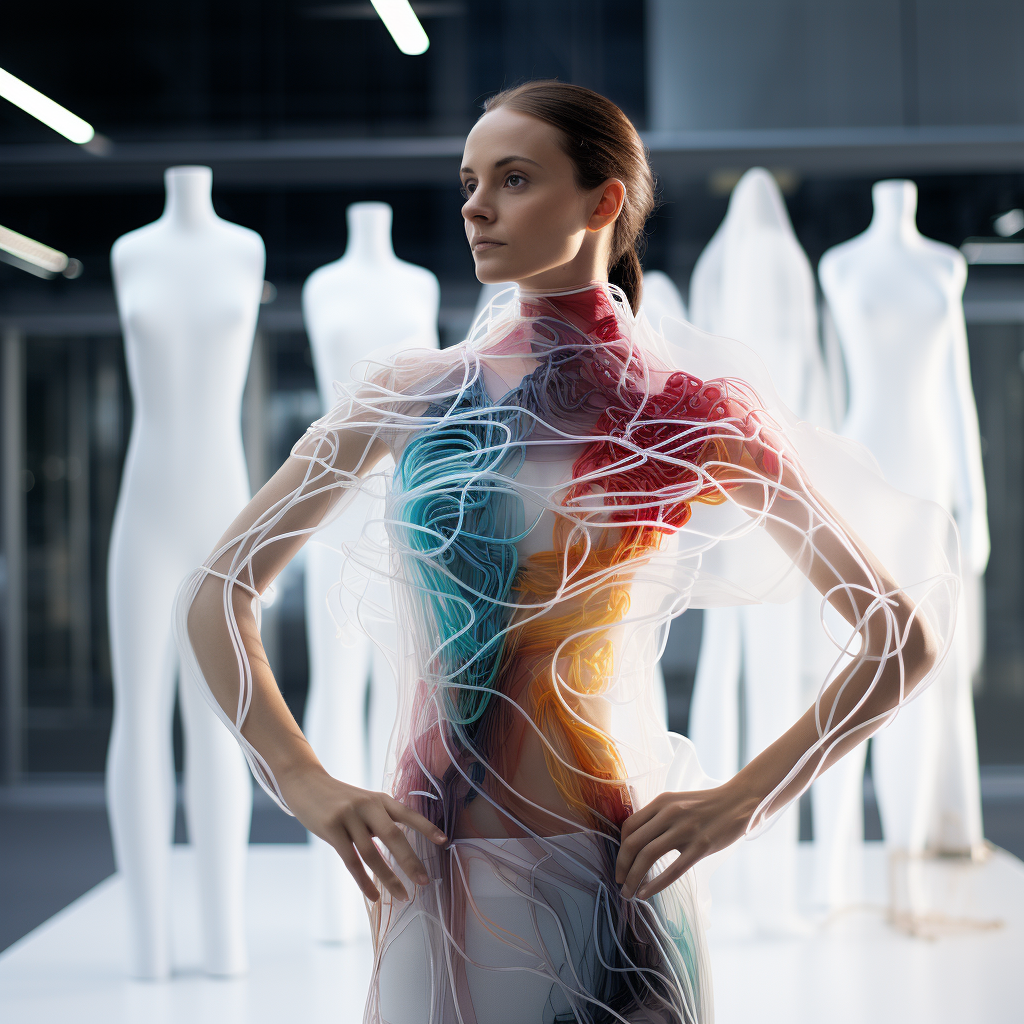Unlocking the Future of Fabric: A Deep Dive into Functional Textiles


The textile industry, once confined to creating basic fabrics for clothing and interiors, has morphed into an innovation-driven sector. It's an industry that has its roots deeply planted in human history, dating back over 5,000 years. Yet, the 21st-century narrative of textiles is incredibly different from its humble beginnings. Welcome to the world of functional textiles—a frontier that merges the aesthetics of fashion with cutting-edge technology. The advances in functional textiles echo a broader societal demand for materials that do more than serve their basic purposes. Today, textiles can heal, protect, and even power electronic devices.
Functional textiles are increasingly making their way into various aspects of life, from healthcare to fashion, and from automotive to defense applications. The surge in interest and application for these textiles has turned it into a burgeoning market, growing at an unprecedented rate. According to the data from Grand View Research, the global smart textile market size was estimated to be $5.55 billion in 2020 and is expected to reach $10.3 billion by 2027.
What Are Functional Textiles?
Functional textiles represent a transformative evolution in the world of fabrics. While traditional textiles primarily fulfill aesthetic and comfort purposes, functional textiles are engineered to provide additional, specialized attributes. These can range from moisture-wicking and temperature control to antibacterial properties and even electronic capabilities.
But what drives this functionality? At the core of these advanced textiles are fibers and yarns that have undergone specific treatments or are intrinsically engineered. These treatments can be chemical, mechanical, or a combination of both. It's also not uncommon to see the integration of nanotechnology and embedded sensors, which add an entirely new layer of functionality to the fabric.
How Do They Differ from Traditional Textiles?
The key difference lies in the purpose. Traditional textiles primarily serve to clothe and provide comfort. In contrast, functional textiles extend their utility to a myriad of specialized tasks, often solving complex problems. For instance, medical textiles can release medication into a wound, while smart textiles in athletic wear can monitor bodily functions and deliver real-time feedback.
Importance in Today's World
The relevance of functional textiles is not merely limited to novelty or luxury; they serve crucial roles in various sectors. Their rise can be attributed to a blend of factors such as technological advancements, growing consumer expectations, and the ever-present need for improved performance and safety in professional settings.
Given the fast-paced nature of our lives, where multi-tasking has become the norm, fabrics that can perform multiple functions are not just desirable but essential. In the medical field, for example, antimicrobial textiles are used to prevent the spread of infections, thereby playing a critical role in patient care. Similarly, in industries like construction or firefighting, textiles with high tensile strength and flame-retardant properties are indispensable.
Classification of Functional Textiles
Understanding the multifaceted world of functional textiles requires a breakdown of its various categories. Though not exhaustive, this classification offers a useful framework for anyone interested in this booming sector.
Medical Textiles
Medical textiles, or "MedTech" fabrics, offer solutions that are often life-saving. From surgical gowns to wound dressings and implantable materials, these textiles are engineered to be biocompatible and adhere to rigorous sterility standards. One compelling example is the development of bandages with embedded silver ions, known for their antimicrobial properties.
Sports Textiles
Active lifestyles demand textiles that can keep up. Sports textiles offer moisture-wicking, temperature regulation, and even UV protection. Brands like Under Armour and Nike have been pioneers, incorporating these high-performance fabrics into their product lines. Nike's Dri-FIT technology, for instance, efficiently removes sweat from the body, keeping athletes cool and dry.
Protective Textiles
In occupations where the margin for error is minute, protective textiles come into play. These textiles are designed for extreme conditions, offering flame resistance, chemical protection, and ballistic shielding. Nomex, a flame-resistant material used in firefighter suits, exemplifies how protective textiles are critical for safety in hazardous environments.
Smart Textiles
Possibly the most futuristic among functional textiles, smart textiles are those that integrate digital components within the fabric. This can range from LED lights in garments to textiles that can monitor health metrics. The advent of smart textiles has even given birth to the term "fashion-tech," a blend of fashion design and engineering.
Each of these categories serves distinct needs but what unites them is the element of specialized functionality. Whether it's the health sector's demand for sterile environments or the consumer's desire for interactive garments, functional textiles are stepping up to meet these varied needs.
Key Applications
The scope of functional textiles is incredibly diverse, extending well beyond the realm of clothing. From aiding in healthcare to redefining fashion, these materials are disrupting traditional industries and creating new opportunities.
Healthcare
In the medical field, functional textiles are revolutionizing patient care. Antimicrobial curtains, for example, have been increasingly adopted in hospitals to minimize cross-contamination. Moreover, textiles embedded with sensors can monitor vital signs, offering real-time data to healthcare providers. The benefits are profound, from reducing hospital-acquired infections to facilitating remote patient monitoring.
Fashion
Fashion is not merely about appearance anymore; it's also about functionality and sustainability. Brands like Rapha and Lululemon are pioneering the integration of functional textiles into everyday clothing. Rapha's cycling gear, built with reflective elements and breathable materials, takes fashion to a new, functional level. Additionally, sustainable textiles with moisture-wicking and odor-resistant properties are making eco-conscious fashion more appealing and practical.
Automotive Industry
When it comes to vehicles, comfort and safety are paramount. Textiles with thermal properties are now being used for car seats, providing heating or cooling effects. Furthermore, sound-absorbing textiles are improving the in-cabin experience by reducing noise levels. Companies like BMW and Tesla are capitalizing on these advancements, offering an enhanced driving experience.
Defense Sector
In the military, functional textiles can mean the difference between life and death. Ballistic-resistant materials are now lighter and more flexible, thanks to advancements in textile engineering. Moreover, uniforms with built-in temperature control and biometric monitoring are moving from concept to reality, offering an extra layer of protection and health monitoring for soldiers in the field.
These applications underscore the versatile potential of functional textiles, proving their significance across multiple sectors. They are no longer a luxury but a necessity, one that is being rapidly adopted to meet the diverse and complex demands of the modern world.

Market Overview
As interest in functional textiles continues to soar, understanding market trends is essential for industry stakeholders and curious consumers alike. The statistics are not just numbers; they reflect a transformational shift in how society views textiles—a shift towards increased functionality and purposeful design.
Current Market Trends
As of 2020, the global smart textile market was valued at approximately $5.55 billion, according to Grand View Research. Within this, the sports and healthcare sectors are seeing particularly robust growth. Moreover, as sustainability becomes a global priority, eco-friendly functional textiles are also gaining traction. Brands that combine functionality with sustainability are receiving positive market reception.
Regional Focus
Geographically, North America currently leads in the adoption of functional textiles, especially in healthcare and sports applications. However, Asia-Pacific is catching up quickly, driven by a burgeoning middle-class population and increasing awareness of health and wellness.
Future Projections
Based on current growth rates, the functional textile market is expected to exceed $10.3 billion by 2027. One of the key drivers is likely to be the Internet of Things (IoT), enabling seamless connectivity between smart textiles and other devices. Furthermore, ongoing research and development promise new categories of functional textiles, potentially expanding the market even more.
Upcoming Innovations
One of the most exciting aspects of this market is its potential for innovation. Companies are already in the advanced stages of developing textiles that can harvest energy, such as kinetic energy from movement or solar energy from the environment. This means future fabrics could not only interact with the user but also power other electronic devices.
Understanding the market is not just about numbers but also about the evolving needs and preferences of society. Functional textiles are at the intersection of technology, fashion, and necessity, making them one of the most dynamic sectors today.
Case Studies
While statistics and trends offer a macro perspective, it's the real-world applications that truly illuminate the transformative power of functional textiles. Let's explore some pioneering brands and technological advancements that are setting new standards in the industry.
Brands Leading the Way
Under Armour: Known for their sports gear, Under Armour's Rush Collection takes performance fabric to the next level by reflecting infrared energy back to the body, thus improving endurance and strength.
- Adidas: The sportswear giant has incorporated recycled ocean plastic into its functional textiles, creating apparel that is both sustainable and high-performing.
- Google’s Project Jacquard: In collaboration with Levi's, Google has developed touch-sensitive textiles that can control smartphones, offering a glimpse into the future of wearable tech.
Technological Advancements
- E-Textiles: Companies like Eeonyx are working on electronic textiles that can conduct electricity, promising applications from data transfer to energy storage.
- Bio-Fabricated Materials: Bolt Threads and Modern Meadow are innovating with lab-grown leather and spider silk, paving the way for sustainable yet functional textiles.
- Sensory Adaptation: Seiren, a Japanese company, has developed fabrics that can change texture in response to temperature or humidity, offering potential applications in medical prosthetics and sportswear.
Each of these case studies is a testament to the remarkable potential of functional textiles to reshape industries and improve lives. They also demonstrate how collaboration across disciplines—be it engineering, fashion design, or material science—is essential for the continued evolution of this sector.
Ethical and Environmental Considerations
While the advancement of functional textiles offers incredible benefits, it's crucial to address the ethical and environmental considerations that accompany this rapid growth. As consumers and industry players, our choices have far-reaching consequences, and it's our responsibility to make informed decisions.
Sustainability
As with any industry reliant on material goods, sustainability is a paramount concern in the world of functional textiles. Producing new, specialized fabrics can be resource-intensive and may contribute to waste and pollution. Brands like Adidas, which incorporate recycled ocean plastics into their products, are taking steps to mitigate such environmental impacts. The introduction of bio-fabricated materials, like lab-grown leather, also presents a less resource-intensive alternative to traditional textiles.
Ethical Production
Given the advanced nature of functional textiles, manufacturing these materials often requires specialized labor and high-tech facilities. It is imperative that these are managed ethically, ensuring fair wages and safe working conditions for laborers. Transparency in sourcing and production can significantly improve the industry's ethical profile.
Data Privacy
Smart textiles, in particular, introduce concerns about data collection and privacy. Garments that can track biometrics or interact with smartphones must have robust security measures to protect against data breaches. Transparency regarding data usage is essential, and companies must adhere to privacy regulations like GDPR or CCPA, depending on their operational regions.
Accessibility
Finally, while functional textiles offer remarkable benefits, there is the question of who gets to enjoy these advancements. As of now, many of these high-tech fabrics come at a premium cost, potentially limiting accessibility for lower-income communities. Brands and governments could explore subsidies or affordable alternatives to ensure these life-enhancing textiles are available to a wider demographic.
Conclusion
Functional textiles represent a frontier in both material science and consumer products, blending innovation with practical applications to meet the evolving demands of a modern society. From healthcare and fashion to automotive and defense sectors, these specialized fabrics are redefining what we expect from textiles.
Key Takeaways
- Versatility: Functional textiles offer specialized features, spanning from medical applications to smart fabrics that merge technology with day-to-day usability.
- Market Dynamics: With a market poised to exceed $10.3 billion by 2027, understanding the trends and regional focuses can offer valuable insights for both consumers and industry stakeholders.
- Case Studies: Brands like Under Armour, Adidas, and tech projects like Google’s Project Jacquard show that the practical applications of these textiles are virtually limitless.
- Ethical Concerns: As we embrace these new technologies, considerations around sustainability, ethical production, data privacy, and accessibility must guide our decisions.
Final Thoughts
As we stand on the brink of a new era in textile engineering, functional textiles offer a promise of a more efficient, safe, and interactive world. But with great innovation comes great responsibility. Balancing technological advances with ethical considerations will be crucial as we weave functional textiles into the broader tapestry of our lives.
Whether you're an entrepreneur looking to venture into this burgeoning field, a consumer curious about the latest high-tech fabrics, or simply someone interested in the fascinating cross-section of technology and textiles, understanding the world of functional textiles can enrich your perspective and inspire new possibilities.
Thank you for joining this comprehensive journey into functional textiles. The fabric of the future is being woven today, and it’s a future filled with potential.





-500x500.jpg)
-500x500.jpg)
-500x500.jpg)
-500x500.jpg)
-500x500.jpg)